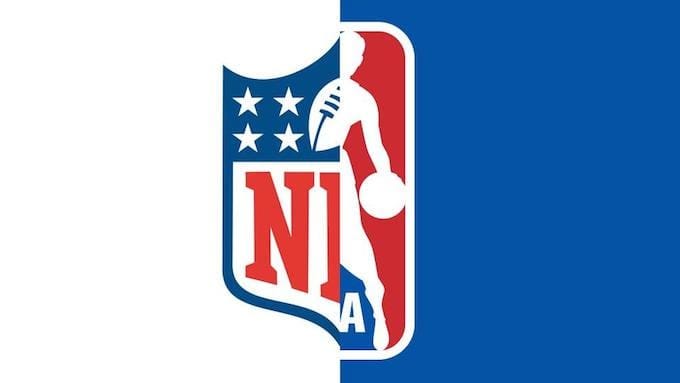(ThyBlackMan.com) If I could have one ”do over” insurance decision, I would have purchased personal/private short and long-term disability insurance, in my 20’s. Recently I became one of the 40% of Americans with a chronic illness and applied for short and long term disability insurance. I discovered several loopholes and “20-foot concrete, steel-reinforced walls/barriers”, depending solely on and Employer Sponsored Disability Insurance Policy!
RISK FACTORS
Majority of you face the strong likelihood you will work for several companies and be without Employer Sponsored Benefits during some of your transitions. As I mentioned in a previous blog I worked for ten companies during my career. And had periods of self-employment, as well as un-employment. I had significant lapses (years) in NOT being covered by an Employer Sponsored Group Disability Insurance Policy.
Majority of employers, DO NOT offer disability insurance. In 2018, 42 percent of private industry workers had access to short-term disability insurance plans and 34 percent to long-term plans. Twenty-six percent of state and local government workers had access to short-term coverage and 38 percent to long-term benefits.
Click below link:
DISABILITY INSURANCE IS OFTEN MORE IMPORTANT THAN LIFE INSURANCE (PART 1)
OTHER RISK
Group insurance plans through an employer can provide needed coverage. You need to know if the plan covers illness and injury, benefit dollar amount and how long you are covered. Some  group policies provide coverage ONLY if injured on the job and ONLY for a short period of time.
group policies provide coverage ONLY if injured on the job and ONLY for a short period of time.
Your current health status and medical history: If you have a current health issue or previous injury, you may still qualify. An underwriter looks at each individual application and determines the risk factor. Some pre-existing conditions may be accepted with an exclusion amendment added to your policy (i.e.- a previous knee injury).
If your employer offers a group long term disability (LTD) program or group short term disability (STD) program, it may replace a portion of your income should you become to ill or injured, which typically DOES NOT include bonus income or commission income. My bonus income was typically 20% or more of my gross income.
Because the benefits are often taxed, many find their group long-term benefits will NOT cover minimum monthly expenses. Group policies are also typically more restrictive with the definition of disability, offer no premium guarantees, can be cancelled at anytime, and typically do not cover partial disabilities. In other words group policies are often the cheapest insurance, with poor benefits.
HOW MUCH DISABILITY INSURANCE DO YOU NEED?
Insurance companies provide about 60 to 66 percent of gross wages. Gross wages are the total amount you are paid, before taxes and other deductions are taken out.
The right benefit amount to purchase, is the portion of your current paycheck, plus commissions and bonus, NOT covered by your employer’s benefit plan (if your employer has a plan).
Example, your gross wage is $120,000, including a $20,000 bonus. Your Employer Sponsored Plan provides 60% (of income excluding the $20,000 bonus) or $60,000 coverage. Can you live on half your income, for an indefinite period? If NOT, you should buy personal or private insurance to cover the additional $60,000 of your gross wages.
FIRST STEP: DETERMINE IF YOU HAVE ANY EMPLOYER SPONSORED DISABILITY BENEFITS
The very first thing you need to do is find out if you have any disability insurance through your employer. You can log into your company’s intranet web site and determine if you have an employer-sponsored plan. If access to a Human Resources professional, contact that person. Learn what your policy covers as well as the definition of “covered earnings”.
Click below link to see types of Disability Insurance Polices that offers better coverage:
DISABILITY INSURANCE IS OFTEN MORE IMPORTANT THAN LIFE INSURANCE (PART 1)
Determine, what percentage of your earnings is covered as well as the monthly maximum amount. Majority of policies cap the maximum payment at around $10,000 per month. Check whether income you receive from your disability income insurance policy is taxable or not. Once you do all that, you can calculate how much additional insurance you need to cover your monthly expenses, which are not covered by your employer plan.
If you have an Employer Plan, I recommend you have a redundant private or personal policy that covers minimum of the expenses you must pay monthly. This way you are covered in between jobs and you can buy a better income coverage earnings policy (that better protects you) versus majority of Employer Sponsored Plan.
If your employer does not offer a disability income insurance plan, you need to buy a personal policy to cover as much of your income as you can afford.
CHOOSING AN ELIMINATION PERIOD AND BENEFIT TIME FRAME
The elimination, or waiting period, is the time – typically 30 days to one year, you wait before receiving income from your disability insurance plan. You have to decide how many days of income are you able to cover from personal resources, or your emergency savings. The longer you extend your waiting period, the lower your premiums. The average plan is around 90 days, waiting period.
BENEFIT TIME FRAMES AND PERCENTAGE GROSS INCOME
Equally important, purchase a plan that pays benefits for as long a period as possible – five years, to age 67, or lifetime.
Determining your elimination period and benefit payment period should be based on your financial net-worth and other stream of income you may have, to protect as much of your earnings as possible, for as long as possible.
CONCLUSION
When I applied for long term disability (still fighting my claim) the eye opening comment made by an insurance company employee was “Mr. Powers paraplegics can fly.” Make no mistake, for profit insurance companies are financially incented to deny your claim. The more claims denied, the higher the profit. The insurance employee (I have a much better word for her) was responding to the fact, my occupation requires 50-80% travel and working (mostly on my feet) in manufacturing plants up to two million square feet and covering multiple, cities, states and countries.
FACTS TO KEEP IN MIND
If you depend solely on your employers’, Group Disability Policy, you must be employed to file, or be able to prove your disability occurred while still employed.
Today a small percentage of employers offer the option of paying for your Employer Sponsored Disability Insurance versus allowing the company to pay for your policy. For those polices where the employee pays for their coverage, the benefits are state and federal tax-free. Lets Look At An Example:
- Bill makes $10,000 per month. He is in the 24% Federal tax rate and a 5% state tax rate, for total taxes of 29%. If Bill’s claim is approved he will receive 60% of his pay (most policies have a maximum of about $10,000 per month payments, regardless of your income.).
- If Bill selected to have his employer pay for his policy he will receive $10,000 x 60% = $6,000 per month and will pay 29% taxes on his benefit payments, each month, so Bill’s take home is ~$4,260 each month.
- If Bill paid for his Company’s Group Policy, his take home is not taxed and he brings home $6,000 each month.
NOTE: By comparison, when working after taxes Bill brings home, $10,000 x (1-.29%) = $7100 (I did not take out his social security and Medicare taxes). So his take home is slightly less than $7,000. As you can see in above example, by paying for his own disability insurance cost Bill receives an additional $1,740 per month. If you have the option to pay for your Employer Sponsored policy take a look at that cost, versus above example. If you can afford it, I recommend you pay for your Employer’s Group Disability Policy, if is that is an option.
In the last two blogs I provided a very quick and short summary concerning Disability Insurance. I recommend you continue reading about this topic. If you have a financial planner, consult her. If any questions for me, I will do my best to answer.
ALL COMMENTS AND FEEDBACK ARE WELCOME. SEE BELOW LEAVE A REPLY SECTION.
PLEASE SIGN UP TO FOLLOW THIS BLOG by clicking AT THE TOP OF THE HOME PAGE: FOLLOW BY EMAIL
DISCLAIMER
I am a proud nerd (my beautiful wife and daughter told me so) investment and finance blogger, with University Rutgers, MBA and Harvard University, Advanced Management.
I am a successful investor in equities and real estate and happy to share my personal finance and investment lessons learned with you. I am NOT however, a licensed financial advisor. Please do not construe my suggestions on this blog, as recommendations for your personal situation. For individual finance advice please seek your own licensed CPA or financial advisors.
Staff Writer; Styron Powers
One may visit this brother over at; Powers Investments Management and also connect via LinkedIn; S. Powers.

















Leave a Reply